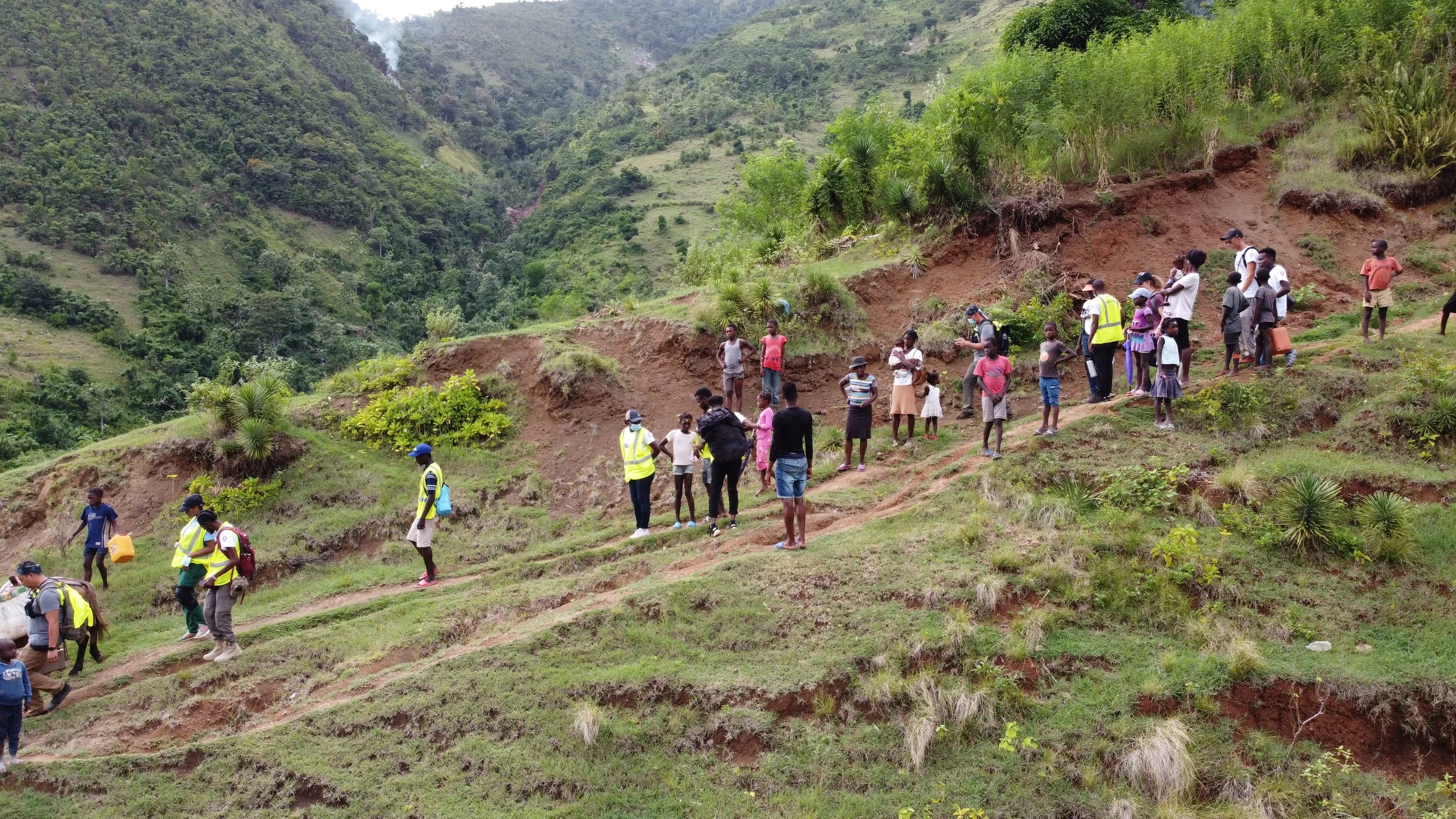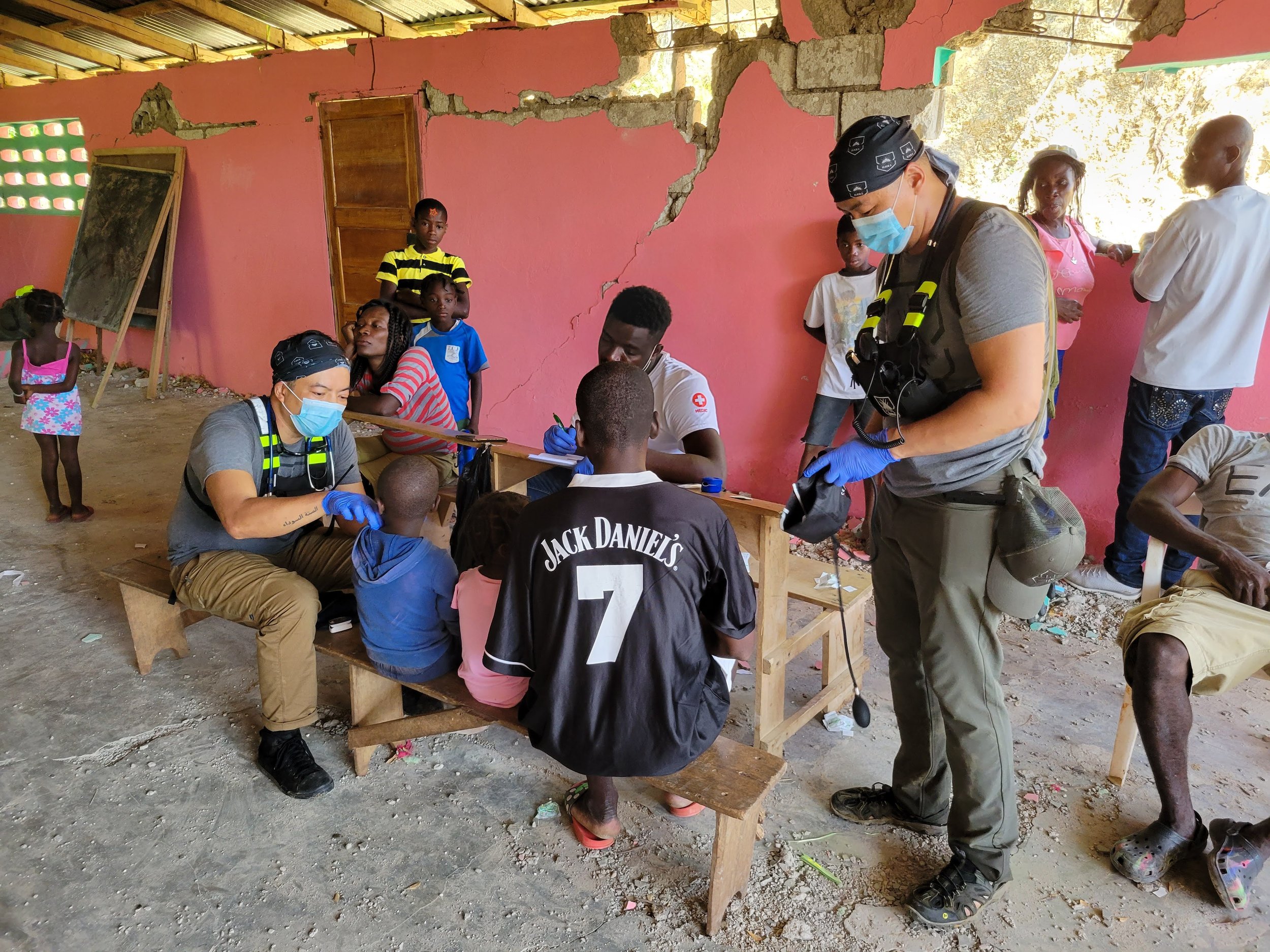
Task Force Haiti 2021
On August 14th, 2021, a 7.2 magnitude earthquake struck the southern part of Haiti near the city of Les Cayes. About 2,200 people were killed and thousands more displaced from their homes with injuries from falling debris. Educare Haiti, a nonprofit organization based in Haiti, quickly assembled a disaster response team of medical students and doctors from Haiti to help provide aid. Many of the areas they targeted were in remote villages in Saint Luis Du Sud. Their teams treated 1,720 patients and evacuated 8 patients via air during their Phase 1 response during their 14-day deployment.
The Black 6 Project helped support their Phase 1 response by providing donations of medical supplies and funding. Their Phase 2 response called for the training of their medical staff in emergency medical care and would be provided by a team from Black 6. On October 3rd, a team from Black 6 traveled to Haiti and linked up with Educare Haiti in Port Au Prince to help support their Phase 2 plans. The first day consisted of training classes in which the Black 6 team taught skills in bleeding control, splinting, and pediatric assessment.
Black 6 helps teach a team of medical volunteers from Educare Haiti
The following day, Educare Haiti traveled with Black 6 by aircraft from Port Au Prince to Les Cayes. After arriving, they picked up additional supplies and settled down in Saint Luis Du Sud. In the evening, they organized all the medication and treatment plans they anticipated to use the next day. The joint team would sleep outside under a roofed outdoor event area owned by the mayor’s office.
On Day 3, the joint team packed up and moved out to visit the village of Corail-Henri. After having breakfast prepared by a local at his house, the drive to Corail-Henri was about an hour drive through rocky roads. The team would set up a mobile clinic in a church that was utilized before during Educare Haiti’s Phase 1 response. During this Phase 2 response, one of the goals was to follow up with patients treated during Educare Haiti’s initial trip. One patient came by that brought joy to Educare Haiti’s team. Islande is a 5-year old girl who had sustained head trauma numerous times during the earthquake and the days following aftershocks. Her open head wound required her to be evacuated by a US Coast Guard helicopter with the help of Educare Haiti’s team during Phase 1. She had returned to the area without residual deficits and a wound that was barely visible. The team treated 155 patients that day with varying problems of infection and stomach issues.
In Corail-Henri, a church was used to set up a mobile clinic.
On October 6th, day 3 of Phase 2, the join team drove up to Cherette where they would set up another mobile clinic. Here they would split up the team where one half would conduct a mobile clinic in Cherette and the other half, accompanied by Black 6, would hike up to the mountain village of Kay Louis. The 3-mile trek follows a trail that follows a river upstream and crisscrosses it multiple times. In Cherette, the team would treat 100 patients and the team that trekked to Kay Louis treated 96 patients.
Holding a clinic inside of a damaged school in Kay Louis
The following day, they formed 2 teams like they did the day before. One team set up a clinic in Solon, a town located by a major road that traverses the southern shore of Haiti. Staffed with 5 team members, they were able to treat 109 patients with similar ailments seen in the other towns. The other half trekked 4 miles into the mountains to reach the town of Kay Plasson. There they treated 63 patients in a small opening of the village since their school had been destroyed by the earthquake. Traveling back down would take the team into the early night.
The trail leading up to the mountain town of Kay Plaisson
On their return, Educare Haiti and Black 6 reviewed on how their operations went and prepared their equipment for travel back to Port Au Prince. Individuals that were able to be followed up from Phase 1 seemed to heal quite well. Preparations for a project, which will make both organizations more prepared to respond in the event of another earthquake, are being currently made, as well as appropriate training for their staff. The Phase 2 mission treated 523 patients in total.

In Corail Henri, a church was used to hold a mobile clinic
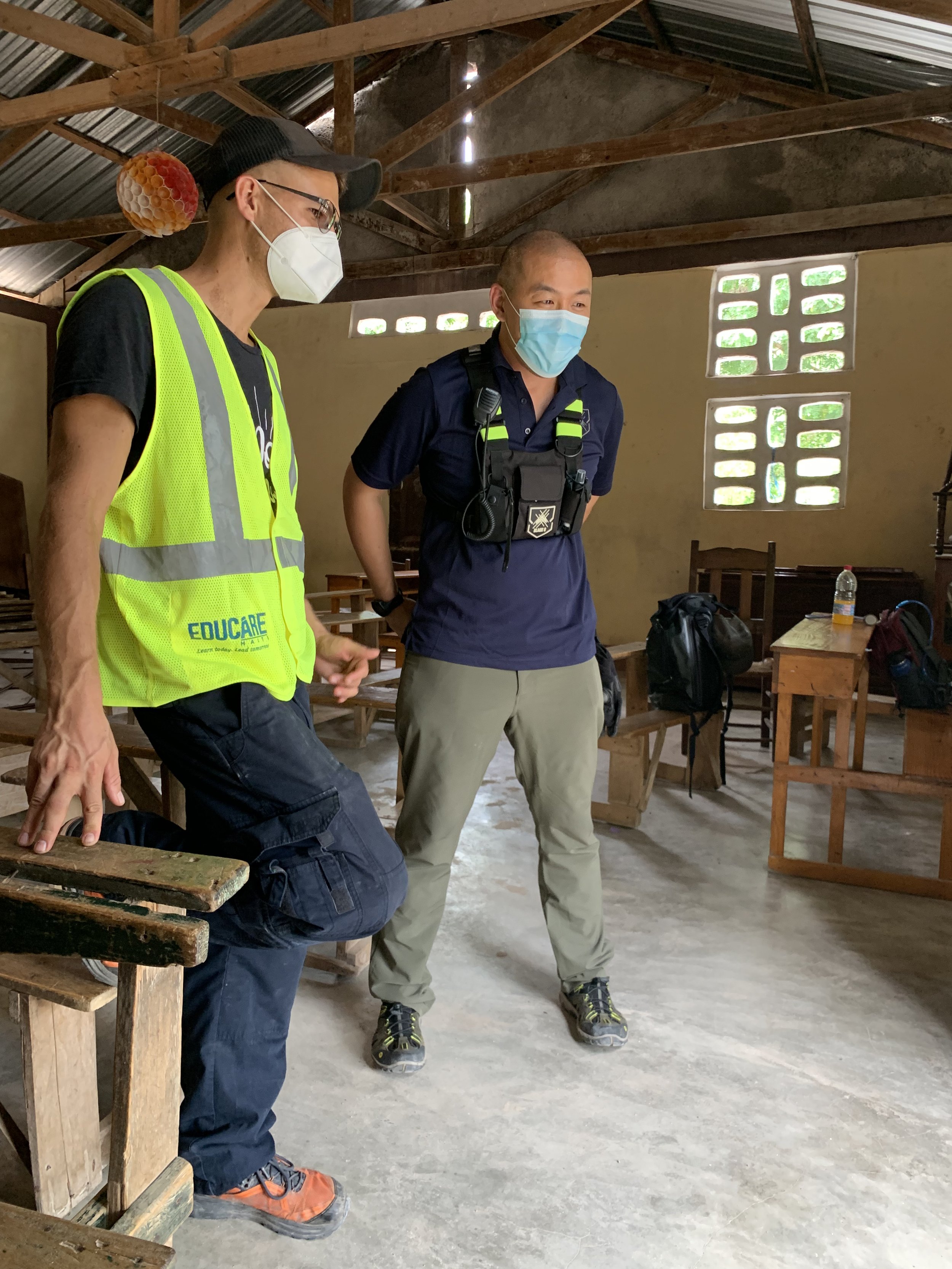
Volunteers from Educare Haiti and Black 6 exchange ideas while holding a mobile clinic in Corial Henri

A collapsed house found along the trail to Kay Louis
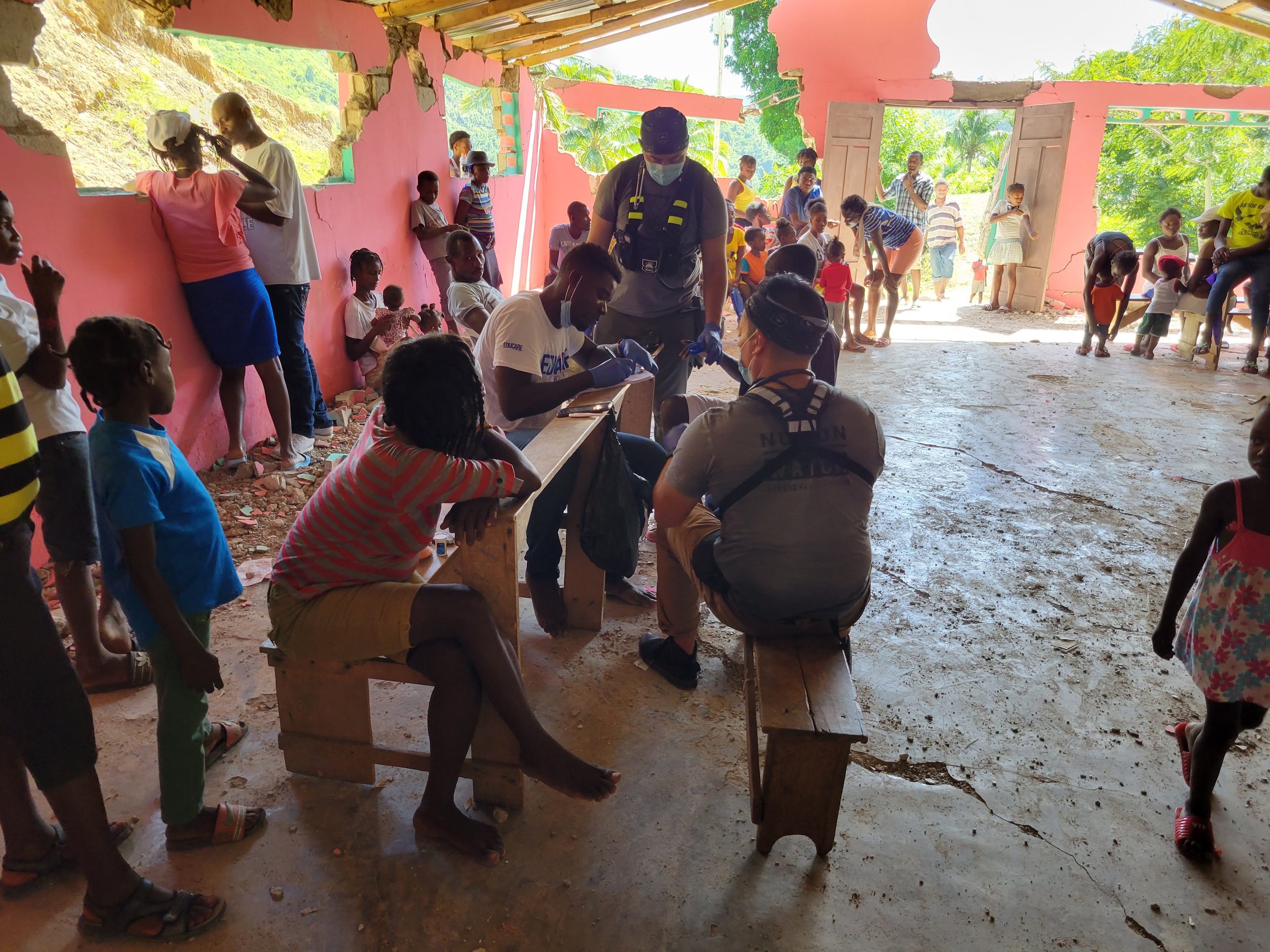
Holding a clinic at an earthquake damaged school in Kay Louis
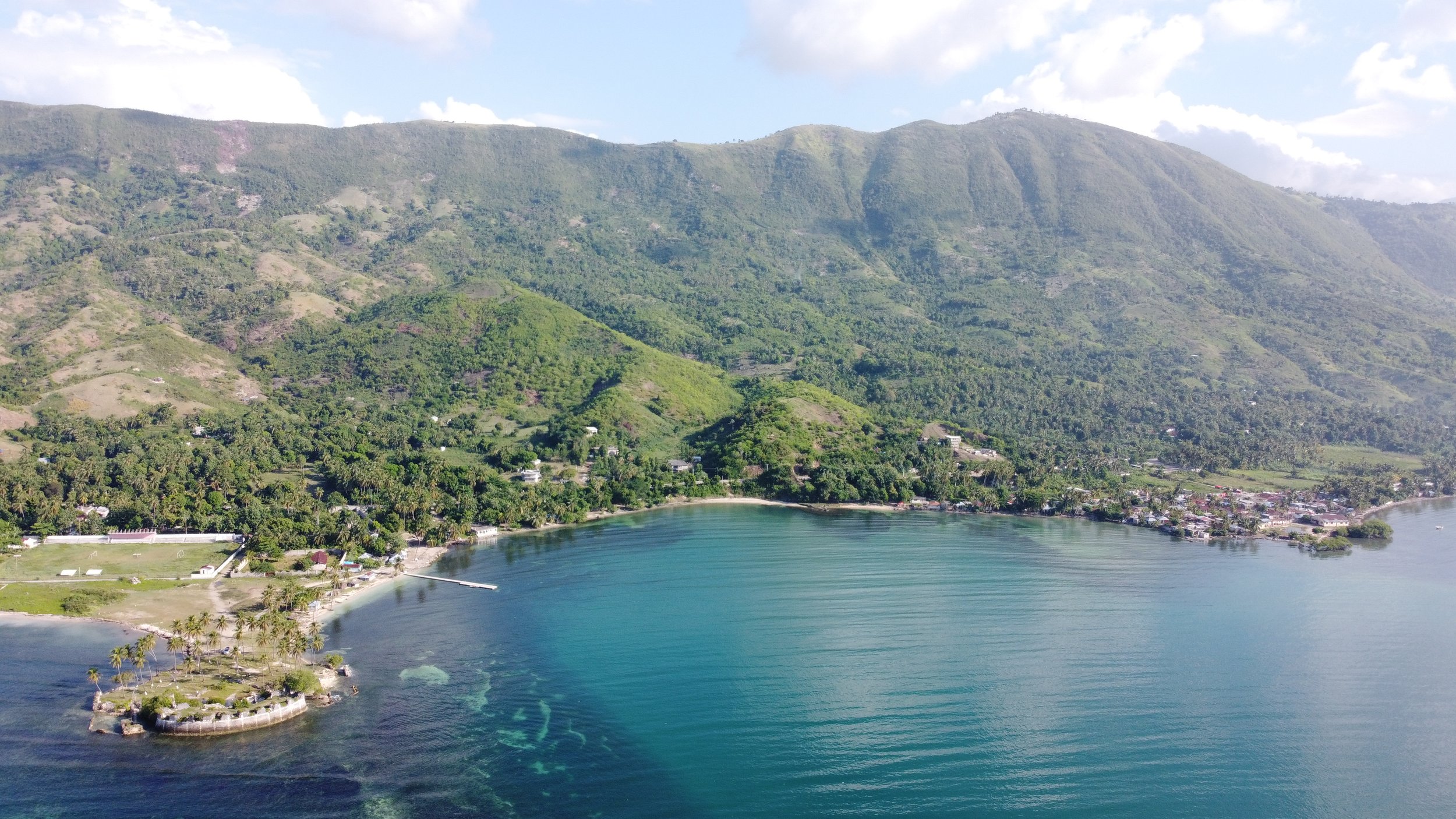
Drone image of the town of Saint Louis De Sud
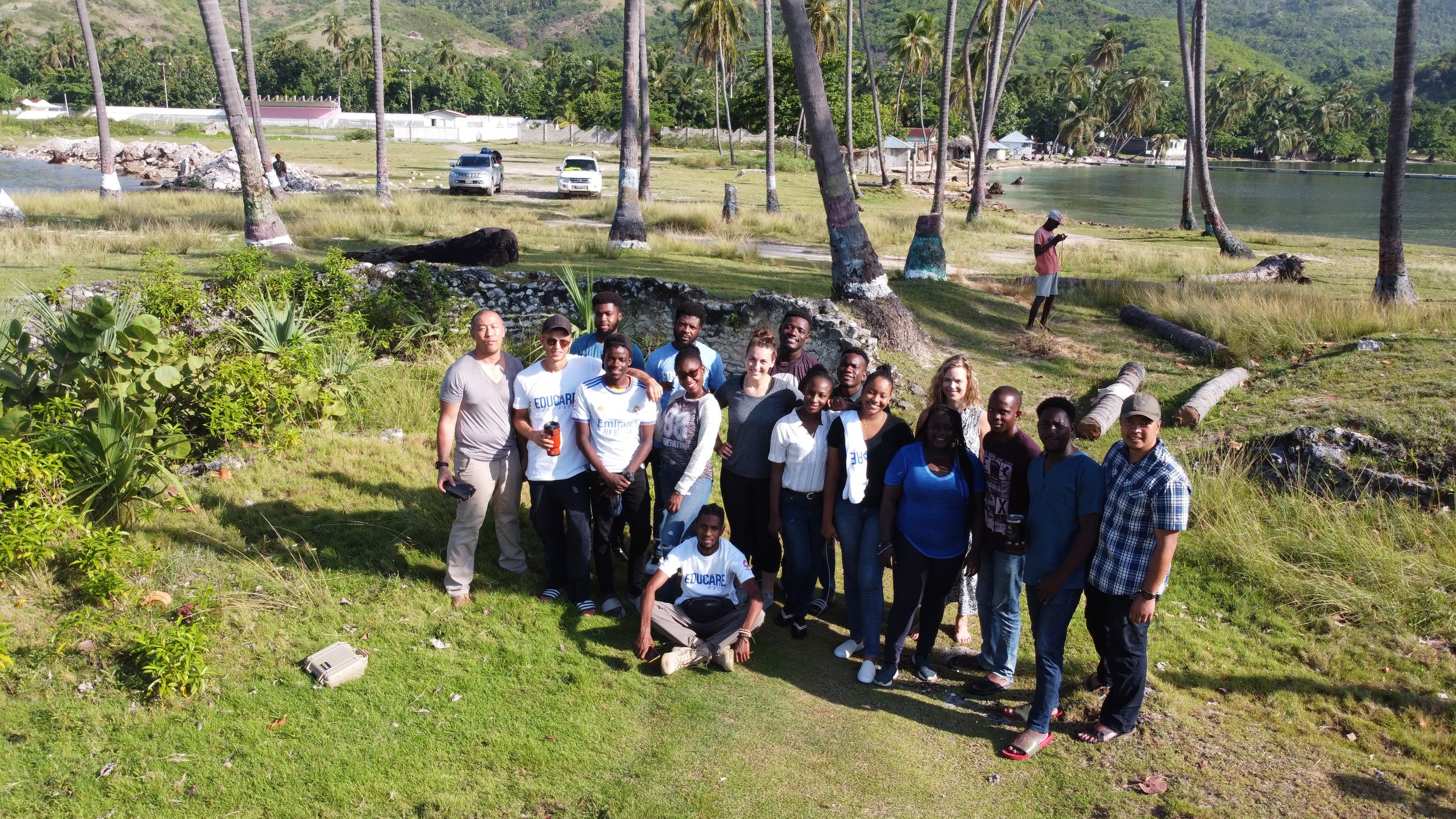
Volunteers from Educare Haiti and The Black 6 Project



